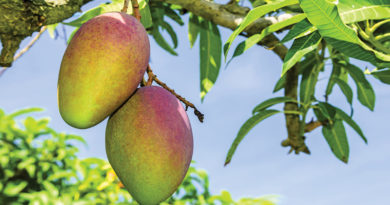May Garden Tips And Those Bloomin’ Flowers!
May is such a lovely month out in the garden. The soil warms as the sun shines throughout the day, bringing much of the garden to show its blooms! There’s more than enough to do to keep you busy this month.
Plant!
May is the perfect month to plant hydrangea and summer flowering bushes like buddleia. The perennial hibiscus finally shows signs of life, so think about transplanting now. It’s not too late to sow sunflower seeds directly into the garden or to plant Dahlia tubers.
By mid-month, the days are warm enough to plant impatiens, petunias, tuberous begonias, and other annuals you’ve dreamed about over winter. Be creative and create hanging baskets full of cascading super bells, and don’t forget to add coleus to planters on the patio. They will last through to the first frost and be great for late-season colour.
Prune!
As spring shrubs such as azalea, viburnum, lilac, and early flowering rhododendron pass their apex, remove the spent flowers and give them a prune. Clip back spring flowering candytuft, periwinkle, and alyssum after they’ve flowered to encourage a second flush of growth. Winter flowering jasmine can be given a haircut, but wait until fall for a hard prune.
Divide And Conquer!
May is another great month to divide perennials, particularly Hosta and ferns. The hellebore has done its job. They will start showing new foliage during the summer, so now is a great time to divide or transplant them. They are unhappy in the hot sun, so place them in a cool, moist spot.
The early season primulas have finished and can be transplanted or removed from the planters on the front stoop to make way for geraniums that will last through to frost.
By the end of the month, tulips and hyacinths will sadly say goodbye. They can either be lifted and left to die back in a cool dark corner of the garden shed (ready for re-planting in the fall) or left where they are so the foliage can die back naturally alongside the daffodils, snowdrops, and crocus; this is a more natural approach with better results for next year’s crop.
Vegetable Patch TLC!
A lot is going on in the vegetable garden. Those small tomato plants you started from seed on the kitchen counter can now be hardened off and planted. Leave them outside for a few hours daily, increasing the time until they can be left out overnight. Then, plant them directly into the ground or in a larger container for patio and dwarf varieties. Carrot, spinach, squash, cucumber, lettuce seeds, scarlet runner beans, and peas can also be sown directly into the ground. Asparagus and rhubarb are ready for harvest.
Attract Pollinators!
With the garden fully awake, it’s time to give the much-loved pollinators some treats. To attract butterflies to the garden, include plants that caterpillars can snack on. Parsley, carrots, dill, and fennel are great snacks, but make sure to plant extra for yourself and put some dichotomous earth around the base of your chosen plants to dissuade the hungry.
Collect Water!
May is a great month to perfect your summer watering regime. Place rain barrels at strategic points throughout the garden to collect rainwater for the hotter summer months when many areas will ration water consumption.
Mulch and Compost!
To keep the garden thriving throughout the summer, mulch, mulch, and mulch some more. Adding grass clippings to your organic compost is a great nutrient enhancer for the soil. In some places, coffee shops are happy to supply gardeners with bags of spent coffee grounds that can be used to fertilize roses and vegetables. They are free, and all you have to do is ask.
In the southern hemisphere, fall has descended, and gardeners are harvesting late-season crops and enjoying the last of the tomatoes while we enjoy the first. The garden is a continual cycle of ebb and flow, and its growing season never ends.
See you next month as we garden and grow together!




